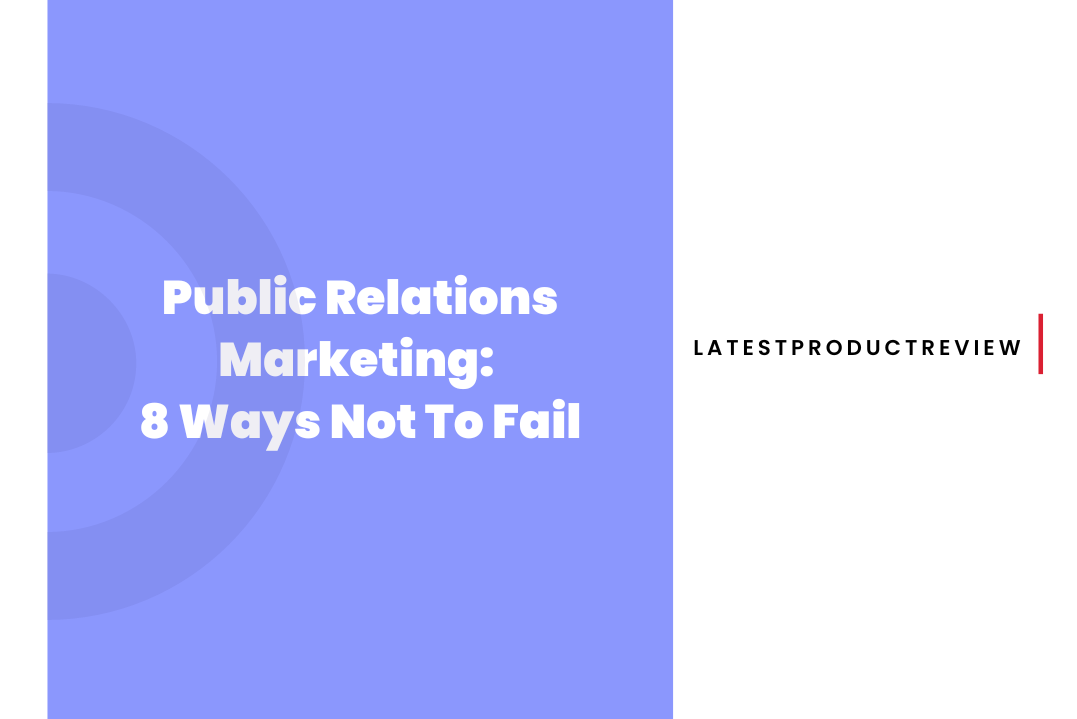Marketing through public relations (PR) is an essential component of every successful business strategy. It entails creating and sustaining a good image of a brand or company in the eyes of the general public, consumers, and stakeholders.
A well-executed public relations strategy may result in improved brand awareness, client loyalty, and a market competitive edge. However, just like any other marketing plan, public relations can fail if not addressed and performed correctly.
In this post, we will look at eight typical PR marketing mistakes and offer advice on how to prevent them.
Ways PR Marketing Can Go Wrong
Lack of Clear Objectives
One of the most common mistakes that businesses make in PR marketing is a lack of defined objectives. It is difficult to assess the performance of a public relations effort without defined goals and objectives in mind.
To avoid this trap, state your goals explicitly. Do you want to raise brand awareness, boost public opinion, or effectively launch a new product? Having specific goals can help drive your PR efforts and keep you on target.
Ignoring Your Target Audience
Understanding your target audience is critical in public relations marketing. Ineffective marketing will result from a failure to identify and engage with your desired audience. Conduct extensive research to learn about their preferences, hobbies, and pain issues.
Customise your public relations communications to resonate with your target audience and leave a lasting impression. Ignoring your target audience can lead to disengagement and even alienation, both of which are harmful to your public relations aims.
Inconsistency in Messaging
In PR marketing, consistency is essential. The messaging of your brand should be consistent across all mediums and interactions. Maintaining a consistent voice and tone, whether through press releases, social media, or events, helps establish your brand identity.
Mixed messages should be avoided since it might confuse your audience and tarnish your brand’s reputation. Ascertain that all team members engaging in public relations initiatives are on the same page in terms of message approach.
Lack of Transparency
Transparency is essential for establishing confidence with your audience. Hide facts, be evasive, or engage in dishonest practices to harm your brand’s reputation.
Instead, be transparent and honest in your public relations efforts. Recognize and accept responsibility for any problems or errors. Transparency increases credibility and strengthens the image of your brand as trustworthy and reliable.
Overlooking Crisis Management
Transparency is essential for establishing confidence with your audience. Hide facts, be evasive, or engage in dishonest practices to harm your brand’s reputation. Instead, be transparent and honest in your public relations efforts.
Recognize and accept responsibility for any problems or errors. Transparency increases credibility and strengthens the image of your brand as trustworthy and reliable.
Neglecting Social Media
In today’s digital age, social media plays an important part in public relations marketing. Neglecting social media channels might stymie your public relations efforts. These platforms provide you with direct access to your target demographic and can help you reach a larger audience.
Engage your followers actively, reply to their comments, and offer excellent information on a regular basis. Using social media successfully raises brand awareness and builds genuine connections with your target audience.
Not Measuring Results
A typical PR marketing failure is a lack of measurement. It is difficult to assess the efficacy of your efforts unless you measure their effects. Establish key performance indicators (KPIs) that are connected with your objectives and track your progress on a regular basis.
To evaluate your public relations activities, use measures like media coverage, website traffic, and social media involvement. Measuring results allows you to make data-driven decisions and improve your tactics.
Ignoring Feedback
In PR marketing, feedback is a vital asset. It gives insights into how your brand is regarded and suggests ways to enhance it. Ignoring input, whether favourable or negative, can result in missed opportunities to correct problems and improve your brand’s image.
Accept consumer, stakeholder, and media input. Address client complaints, praise them for positive comments, and demonstrate that you appreciate their thoughts. Responding to comments shows that your company is responsive and customer-focused.
Ways To Avoid These Mistakes
Expanding on the topic of Public Relations Marketing and how to avoid failure, there are several additional factors and strategies that can significantly impact the success of your PR efforts. Let’s delve deeper into these aspects:
Building Relationships with the Media
The media may assist in amplifying your brand’s message to a larger audience, making it a strong ally in PR marketing. Building connections with the media, on the other hand, involves more than merely sending out press releases. Spend time getting to know the journalists and media outlets who cover your sector or speciality.
Make your proposals unique by including exclusive tales or insights. Developing a relationship with journalists may result in more media attention and favourable depictions of your business.
Storytelling and Emotional Appeal
People are drawn to emotionally charged stories. In PR marketing, narrative can be a powerful strategy for capturing your audience’s attention and leaving a lasting impression.
Create emotional connections with your audience through customer success stories, community activities, or behind-the-scenes insights into your company’s culture. Emotions have a strong influence on decision-making, and a well-told tale may make a lasting impression on your audience.
Employee Advocacy
Employees might be your most powerful brand ambassadors. Encourage and empower them to be brand ambassadors both online and offline. Share your company’s mission and principles with your staff, and encourage them to take part in public relations campaigns.
Employees who are engaged and enthusiastic about their work reflect well on the company and provide a strong feeling of authenticity.
Collaboration and Partnerships
Consider cooperating with other businesses, influencers, or organisations whose beliefs and target audience fit with yours. Strategic alliances may broaden your reach and reputation.
Joint events, co-branded initiatives, or shared content may bring in new viewpoints and audiences. However, make sure that any partnership seems real and aligns with the personalities of both businesses.
Adapting to Changing Trends
Public relations marketing, like other types of marketing, changes with time. To effectively interact with your audience, stay up to speed on the newest trends and platforms.
For example, as social media platforms grow, you may need to change the way you distribute information and connect with people. Keep your brand relevant and appealing to your target audience by remaining nimble and eager to experiment with new PR techniques.
Monitoring and Managing Online Reputation
Online reputation is crucial in the digital era. Negative reviews, social media disputes, or negative media coverage can all harm your brand’s reputation. Implement tools to monitor internet mentions of your brand and respond to any unfavourable feedback as soon as possible.
Responding to client criticism professionally and empathetically may demonstrate your dedication to customer happiness and boost your brand’s image.
Conclusion
To summarise, good public relations marketing needs careful preparation, a thorough grasp of your target audience, and constant efforts. Avoiding the typical problems highlighted above will put you on the way to successful public relations initiatives.
You can build a strong PR strategy that contributes to the long-term success of your brand or company by defining clear objectives, understanding your audience, maintaining consistency in messaging, practising transparency, having a crisis management plan, embracing social media, measuring results, and valuing feedback.
Remember that public relations is more than simply creating a great image; it is also about cultivating connections and generating trust with your stakeholders.





